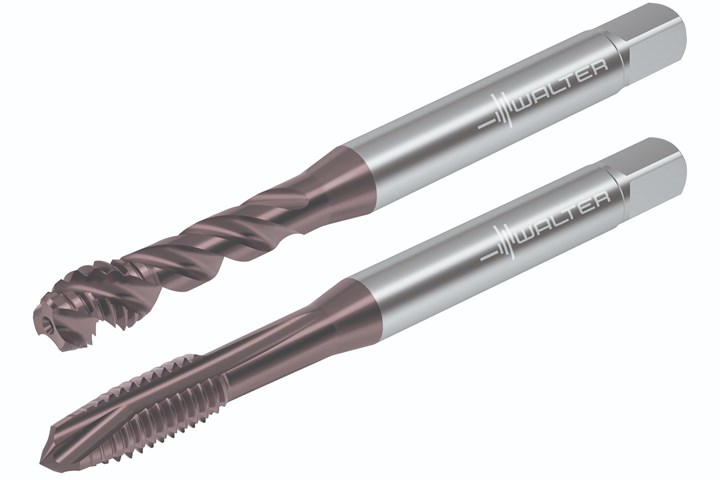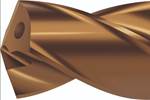Extended Through-Hole Tap Range Offers High Versatility
Universal TC117 blind-hole and TC217 through-hole taps from Walter just got even more versatile with oversized extensions.

Photo Credit: Walter USA
Walter USA enables wider versatility with an expanded range of tolerances for its popular TC117/TC217 Advance tap product line.
The new, oversized blind and through-hole taps—H7 (+0.003 in.) UNC#6-UNC 5-16 in., UNF#6-UNF 5-16 in., and H11 (+0.005 inch.) UNC1/4-UNC¾ in., UNF1/4 -UNF¾ in.—deliver high threading productivity in a wide range of different materials. The TC117 (blind-hole) and TC217 (through-hole) taps tackle material ranging from steel and stainless to cast iron and non-ferrous materials (ISO material groups P, M, K and N), and materials with hardness up to 40 Rc (370 HB). Walter says this versatility can help save on inventory costs by reducing the number of taps needed.
The TC117 blind-hole tap has a 40-degree helix angle and up to 2.5 x DN with chamfer form C (semi bottoming) or E (full bottoming). The TC217 through-hole tap features a spiral point for forward chip evacuation and a thread depth capability of 3.0 × DN. Both taps use HSS-E substrate which, typically alloyed with cobalt, provides excellent durability. The taps feature grade WY80RG—for good chip control, good wear resistance and higher cutting speeds—and WY80FC, which offers less wear resistance and cutting speed as well as chip control for stringy and difficult-to-control chips including stainless steel. All are offered with DIN length/ANSI Shank (DIN/ANSI standard).
Related Content
-
The Ins and Outs of Hot Runner Temperature Control
A training checklist that explains the why and how of proper hot runner temperature control and system management.
-
Solving Mold Alignment Problems with the Right Alignment Lock
Correct alignment lock selection can reduce maintenance costs and molding downtime, as well as increase part quality over the mold’s entire life.
-
Laser Welding Versus Micro Welding
The latest battle in finely detailed restoration/repair of mold materials.










.png;maxWidth=300;quality=90)

